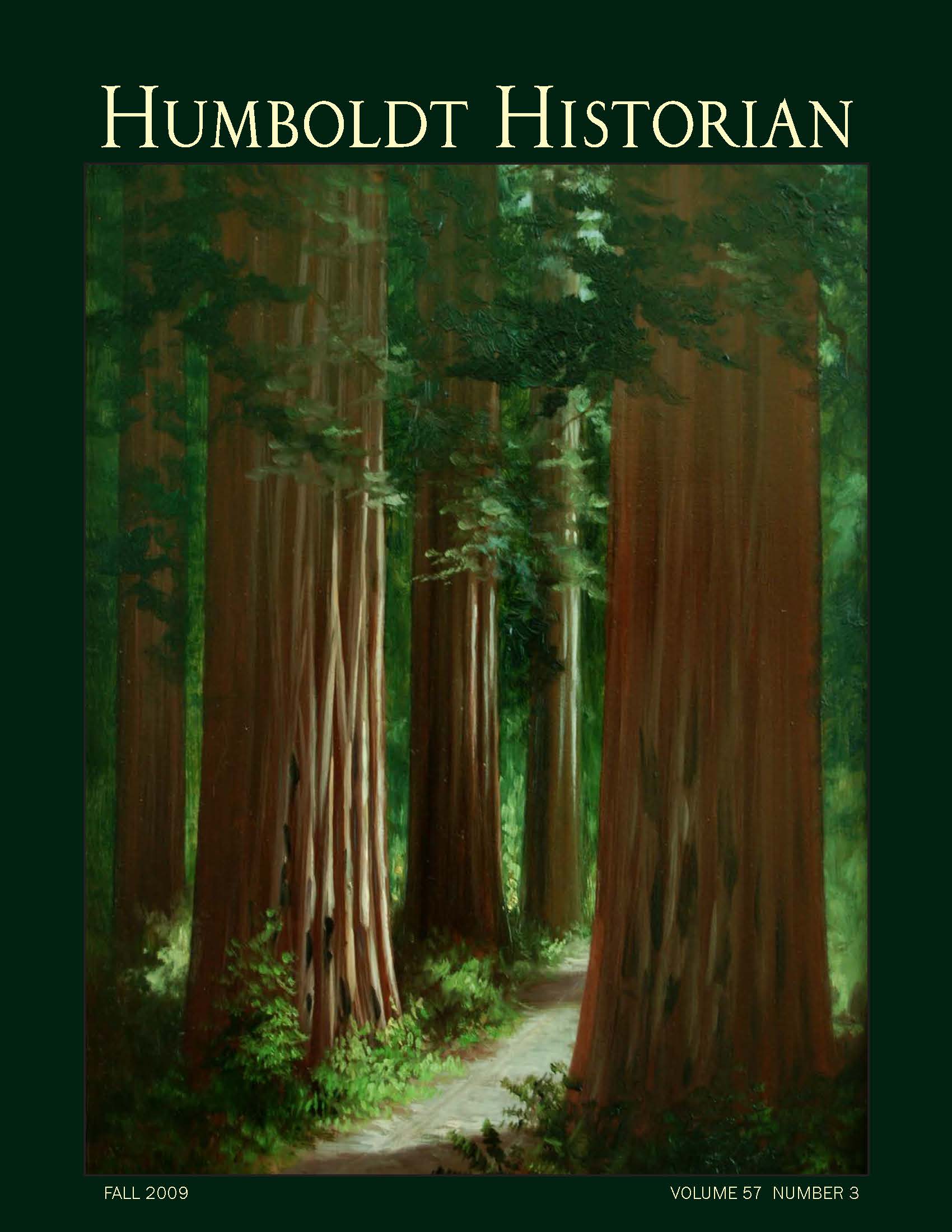Lucille Vinyard, A Voice for Redwoods and Wilderness
Suzanne Forsyth
For forty-five years, Lucille Vinyard has dedicated her life to conservation. It all began in 1963, with the controversial campaign for a redwood national park.
Valley of the Giants: Hollywood Comes to Crannell
Weston Walch
Many Humboldters were hired as movie extras in 1938, but young Wes Walch had a plum assignment with a ringside seat.
3umbermen and Land Fraud
Jerry & Gisela Rohde
Who really owned the redwood empire, and how did they gain title to it?
Women Welders of C. B. & I.
Eris Green McCarthy
During her college summers, the author donned men's gear and became a welder at the dry docks.
The Bottling Monroes
Catherine Monroe Mace
Will the secret recipe for Champagne Cider ever be rediscovered?
Mid-Morning at the Mill - The Presence of the Past
Jerry Rohde
Reflecting on cycles of boom and bust.
A Glimpse in Time: Trinidad, 1921
Benjamin Van Zandt
Looking back with the Van Zandt family.
“This work by C. T. Wilson was painted in 1911 for a local family, with whose heirs it still resides here in Humboldt. The redwood forests have always held a unique fascination for people. In the days before color photography, people looked to landscape painters for life-like representations of nature’s glories. Other artists painted California’s redwoods, but Wilson’s works were the most broadly known, not only for their size-his largest painting was ninety-eight feet in length-but because the artist was skilled at marketing. Wilson’s paintings of redwoods were featured on calendars nationwide, and displayed at Expositions in San Francisco and Chicago. Born in San Francisco in 1885 to Agnes E. Wilson, considered California’s earliest known woman painter, Wilson spent about fifteen years in Humboldt, between 1900 and 1916, painting mostly redwood scenes. Many local peiople may know of Wilson from his large-scale forest paintings which hang in Eureka at the county library, courthouse, and city hall. The Wilson painting shown here is unusual in that it is small-just nineteen-and-a-half inches tall by elevenand-a-half inches wide. Cropped for the front cover, ”

